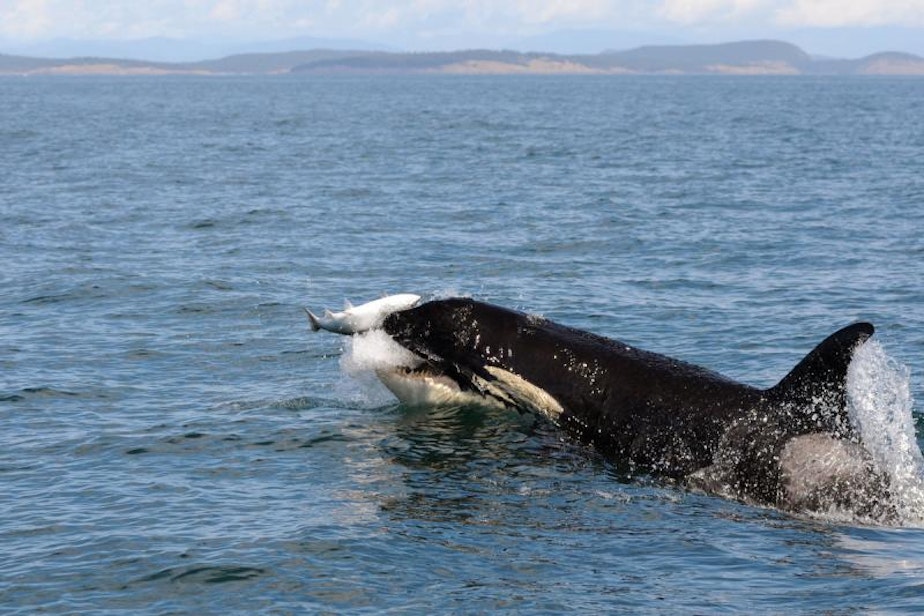Northern and southern resident orcas hunt differently. New study could help orca numbers

According to a new study from the University of Washington and NOAA Fisheries, northern and southern resident orcas who live in the Salish Sea have different fish hunting patterns.
The northern resident orca’s population has slowly increased. However, southern resident orca numbers are still dangerously low. Both types of killer whales eat salmon and other fish. Their favorite snack is a big chinook because “they’re lipid rich, and they pack the biggest bang for the buck,” according to Jennifer Tennessen, a UW researcher and lead author of the study.
Typically, when killer whales hunt, the group travels to a foraging habitat, individually dive down to capture fish, then share with their family, Tennessen said.
According to the new study in both populations females were the best at catching prey. Female northern resident orcas were also more efficient compared to males as they spent more time foraging. Tennessen says the southern resident orcas had “completely opposite behavior.” Males captured more prey and spent more time foraging compared to females.
When a female has a calf, their ability to capture fish declines, however, Tennessen says this trend was particularly strong among the southern resident orcas. No females who had calves caught prey during the study.
One theory behind the different patterns could be due to the southern resident orcas evolving as they try to feed themselves, Tennessen said.
Sponsored
Females are also more vulnerable to disturbances in the water, especially to frequencies from boats, explained Tennessen. Southern resident male orcas may be trying to catch more fish to provide for their families while the females are feeling the impacts from the disturbances in the habitat.
“Reducing disturbance may be key to recovering these critical female foraging opportunities,” Tennessen said, adding that this new study could help environmental groups create better convocation plans for the killer whales now that they understand their hunting patterns.
Northern resident orcas have tripled their population over the past 50 years. There’s now more than 300 of them. Southern resident orca populations are endangered. Currently, there are 73 known southern Resident Killer Whales.




